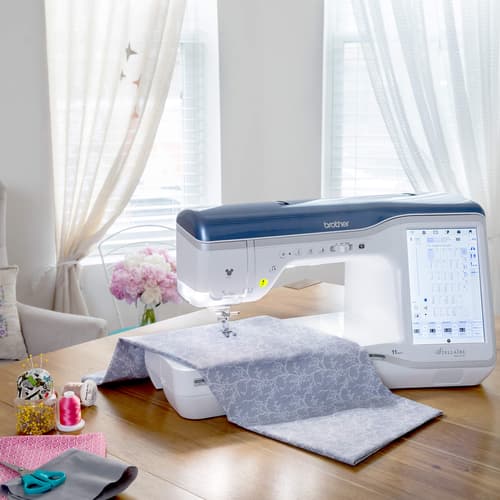Introduction
You’ve spent countless hours perfecting your company logo. It looks amazing on your website, business cards, and signage. But when you try to embroider it onto shirts or hats, suddenly your crisp, clean design becomes a blurry, puckered mess. What went wrong?
Convert logo to embroidery isn’t as simple as uploading a JPEG and hitting “print.” Embroidery is a completely different medium with its own rules and limitations. The good news? With the right approach, you can transform any logo into stunning embroidered art that maintains your brand’s professional image.
In this guide, we’ll walk through the entire process from digital file to finished stitch. You’ll learn:
- Why some logos embroider better than others
- Step-by-step conversion techniques
- Common mistakes and how to avoid them
- When to DIY and when to hire a professional
Why Convert Logo to Embroidery is Tricky
The Fundamental Differences
Digital Logos:
- Use unlimited colors and gradients
- Can include extremely fine details
- Appear the same at any size
- Have no physical constraints
Embroidered Logos:
- Limited to available thread colors
- Minimum stitchable detail size
- Scale affects stitch density
- Must account for fabric movement
Problem Areas in Conversion
- Small Text: Letters under 0.4″ often become unreadable
- Gradients: Smooth color transitions are difficult to replicate
- Fine Lines: Thin strokes may disappear or pucker
- Complex Shapes: Too many elements can create bulk
Preparing Your Logo for Embroidery
Step 1: Evaluate Your Current Logo
Ask these key questions:
- Does it rely on color gradients or shadows?
- Are there extremely thin lines or small text?
- How will it look at the intended size?
- Does it use complex shapes or textures?
Step 2: Simplify When Necessary
Common adjustments:
- Convert gradients to solid color blocks
- Thicken hairline strokes
- Increase text size or use bolder fonts
- Reduce the number of colors
Step 3: Choose the Right File Format
Best options:
- Vector files (AI, EPS): Ideal for clean conversion
- High-res PNG: Second best option
- Avoid JPEGs: Compression artifacts cause problems
Conversion Methods Compared
1. Auto-Digitizing Software
Best for: Simple logos with clean lines
Tools: SewArt, Embrilliance Essentials
Pros:
- Fast and inexpensive
- Good for basic shapes
Cons: - Struggles with complex designs
- Often requires manual cleanup
2. Professional Digitizing Services
Best for: Important branding or complex logos
Providers: Absolute Digitizing, The Digitizing House
Pros:
- Human expertise ensures quality
- Optimized for your specific fabric
Cons: - More expensive (15−15−75 per design)
- Longer turnaround (24-72 hours)
3. Manual Digitizing
Best for: Designers wanting full control
Software: Wilcom, Pulse
Pros:
- Perfect customization
- Learn a valuable skill
Cons: - Steep learning curve
- Time intensive
Step-by-Step Conversion Process
Step 1: Clean Up the Artwork
- Remove backgrounds
- Simplify color blends
- Thicken thin elements
- Outline key shapes
Step 2: Choose Stitch Types
- Satin stitches: For borders and text (shiny, raised look)
- Fill stitches: For solid areas (flat appearance)
- Running stitches: Fine details and outlines
Step 3: Set Stitch Parameters
- Density: Typically 4-6 stitches/mm for fills
- Underlay: Essential for stability
- Pull compensation: Adjusts for fabric stretch
Step 4: Test and Refine
- Stitch on scrap fabric first
- Check for registration issues
- Adjust tension if needed
- Verify color accuracy
Pro Tips for Perfect Results
1. The 3-Color Rule
Limit your palette to:
- Main color (70% of design)
- Secondary color (25%)
- Accent color (5%)
2. Minimum Size Guidelines
- Text height: 0.4″ minimum
- Line thickness: 1.5mm minimum
- Space between elements: 2mm minimum
3. Fabric-Specific Adjustments
- Knits: More underlay, less density
- Wovens: Standard settings
- Caps: Compensate for curved surface
Common Mistakes to Avoid
1. Ignoring Fabric Type
Using the same file for:
- Polo shirts (stretchy)
- Canvas bags (thick)
- Caps (curved)
Solution: Create separate versions for each material
2. Overcomplicating the Design
Trying to include:
- Photorealistic details
- Micro text
- Dozens of colors
Solution: Simplify to key brand elements
3. Skipping the Test Stitch
Assuming the digital preview is accurate
Solution: Always stitch a physical sample first
When to DIY vs. Hire a Pro
Do It Yourself When:
- Logo is extremely simple (text + basic shapes)
- You enjoy learning new skills
- Budget is limited
- Have time for trial and error
Hire a Professional When:
- Branding must be perfect
- Working with complex artwork
- Need multiple size variations
- Time is more valuable than money
The Future of Logo Embroidery
Emerging Technologies
- AI-Assisted Digitizing
- Faster conversions
- Better auto-cleanup tools
- 3D Stitch Simulation
- Virtual previews before stitching
- Reduced material waste
- Dynamic File Adjustment
- Automatic resizing without quality loss
- Instant fabric-specific optimization
Conclusion
Converting your logo to embroidery doesn’t have to be a frustrating process. By understanding the medium’s unique requirements and following the right steps, you can create embroidered versions that do justice to your brand.
Remember:
- Start with the cleanest possible artwork
- Simplify complex elements
- Choose the right conversion method for your needs
- Always test before full production
Whether you decide to DIY or work with a professional digitizer, these principles will help ensure your logo looks as impressive in thread as it does on screen. Now grab your design and start creating something wearable!
